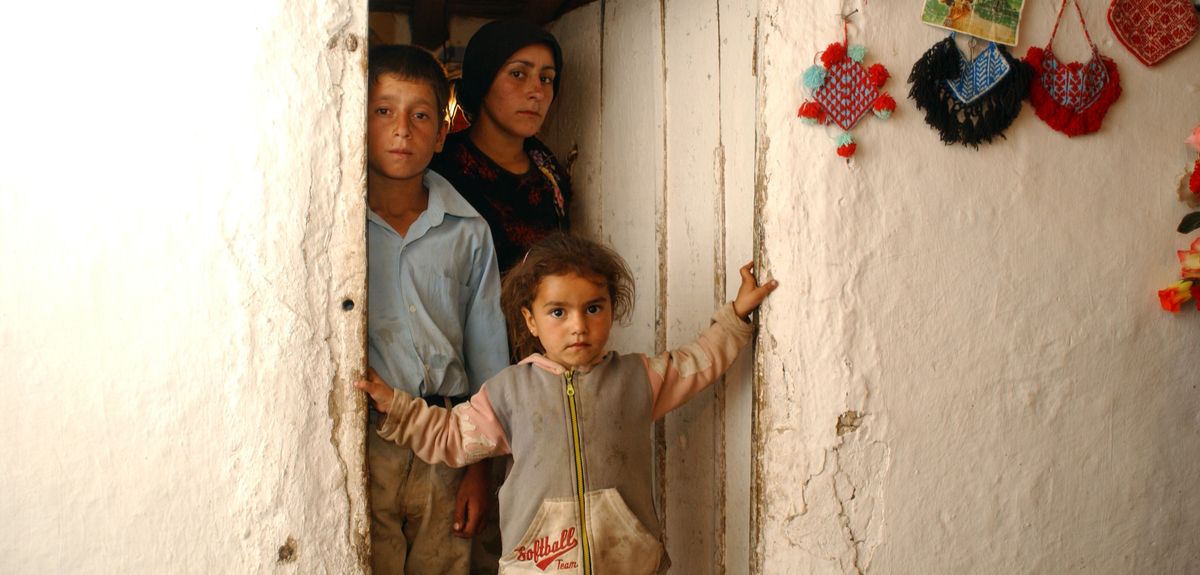
Women in many poor households excluded from education– report
- 215 million people live in households where no woman or girl has completed primary school but at least one man or boy has
- Two-thirds of multidimensionally poor households have no females who have completed primary education
- Structural gender inequalities in education hinders progress
- Poverty index shows inequalities in poverty between ethnic groups
One in six of the world’s poor (215 million) live in households where no female has completed six years of school, but at least one male has, according to new figures on global poverty released today, by the United Nations Development Programme and the Oxford Poverty and Human Development Initiative. Adding households where no one is educated brings this number up to 836 million, or two-thirds of poor people.
In addition, the report reveals, disparities in poverty among ethnic groups are consistently high, even exceeding disparities across other group characteristics, such as location.
Today’s report analyses multidimensional poverty in developing countries, which takes account of numerous indicators, including schooling, access to utilities and health affects more than 1.3 billion-worldwide.
Achieving a future where all people enjoy core capabilities they value and have reason to value requires the global community to fix the structural inequalities that oppress and hinder progress
Dr Sabina Alkire
It finds poverty disparities across ethnic and racial groups are consistently high across many countries. The two poorest ethnic groups in Gambia - the Wollof and the Sarahule – experience similar levels of poverty - but their deprivations differ, suggesting different policy actions are needed to reduce these gaps.
Dr Sabina Alkire, Director of OPHI, says, ‘Achieving a future where all people enjoy core capabilities they value and have reason to value requires the global community to fix the structural inequalities that oppress and hinder progress. Disaggregating multidimensional poverty data by ethnicity, race, caste and exploring gendered and intrahousehold patterns unmasks disparities and forms a vital guide to policymakers to leave no one behind in the last decade for action.’
According to the report, Arab states have the highest percentage (more than 70%) of poor people in households in which no girl or woman is educated. The numbers are also high for South Asia (65.9%) and Sub-Saharan Africa (65.2%).
It also finds, women and girls living in such poor households are also at higher risk of violence, as multidimensional poverty is positively correlated with intimate partner violence.
Women and girls living in such poor households are also at higher risk of violence
The global Multidimensional Poverty Index (MPI) - produced by the UNDP and OPHI - measures poverty by considering various deprivations experienced by people in their daily lives, including poor health, insufficient education and a low standard of living.
Today’s report examines the levels and composition of poverty across 109 countries covering 5.9 billion people and presents an ethnicity/race/caste disaggregation for 41 countries with available information. It also includes an intra-household analysis of multidimensional poverty focused on gender covering all countries.
The report also shows how, within a country, multidimensional poverty among different ethnic groups can vary immensely. For example, the difference in the percentage of people who are poor across ethnic groups is more than 70% points in Gabon and Nigeria. In Latin America, indigenous peoples are among the poorest. And, in Bolivia, indigenous communities account for about 44% of the population but 75% of such poor people. Meanwhile, in India five out of six multidimensionally poor people were from lower tribes or castes.
Worldwide, across 109 countries and 5.9 billion people:
- 1.3 billion people are multidimensionally poor.
- About half (644 million) are children under age 18.
- Nearly 85% live in Sub-Saharan Africa (556 million) or South Asia (532 million).
- More than 67% live in middle-income countries, and
- One in six (207 million) live in female-headed households.
But what is the day-to-day reality of life for multidimensionally poor people? The data paint a grim picture:
- 481 million live with an out-of-school child.
- 568 million lack safe drinking water within a 30-minute roundtrip walk.
- 788 million live in a household with at least one undernourished person.
UNDP is the leading United Nations organisation fighting to end the injustice of poverty, inequality, and climate change. Working with our broad network of experts and partners in 170 countries, we help nations to build integrated, lasting solutions for people and planet.
The Oxford Poverty and Human Development Initiative (OPHI) is an economic research and policy centre within the Oxford Department of International Development at the University of Oxford. OPHI aims to build and advance a more systematic methodological and economic framework for reducing multidimensional poverty, grounded in people’s experiences and values
 Expert Comment: Chatbot-driven sexual abuse? The Grok case is just the tip of the iceberg
Expert Comment: Chatbot-driven sexual abuse? The Grok case is just the tip of the iceberg
 New study finds that stopping weight-loss drugs is linked to faster regain than ending diet programmes
New study finds that stopping weight-loss drugs is linked to faster regain than ending diet programmes